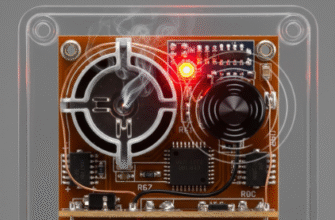We encounter simple machines every single day, often without giving them a second thought. They are the fundamental building blocks of more complex technology, tools that make our lives easier by changing the direction or magnitude of a force. Think of levers, wheels and axles, pulleys, inclined planes, and wedges. Among these ingenious devices, the screw holds a special place. It might look simple, just a spiral ridge running around a cylinder, but its ability to convert rotational motion into linear motion with significant force multiplication is truly remarkable.
Understanding the Screw: More Than Just a Twisted Nail
At its core, a screw is essentially an inclined plane wrapped around a central rod or cylinder (sometimes a cone). Imagine taking a ramp (an inclined plane) and winding it around a pole – that’s the basic idea of a screw thread. This helical ridge is called the thread. The central rod it wraps around is the shaft or shank.
Two key characteristics define how a screw functions:
- Pitch: This is the distance between two adjacent threads, measured parallel to the screw’s axis. A smaller pitch means the threads are closer together.
- Diameter: This refers to the overall width of the screw, including the threads.
These elements work together to determine the screw’s mechanical advantage and how it behaves when turned.
How Does It Work? The Magic of Torque Conversion
The power of the screw lies in its ability to transform a relatively small rotational force (called torque), like the force you apply with a screwdriver or your hand turning a jar lid, into a much larger linear force acting along the axis of the screw. When you turn a screw, you are essentially pushing an object along a very long, gently sloping ramp (the inclined plane of the thread).
Think about pushing a heavy box up a ramp versus lifting it straight up. The ramp makes the job easier because you trade distance for force – you push over a longer distance, but with less effort at any given moment. The screw works on the same principle. Each full rotation of the screw advances it linearly by a distance equal to its pitch. Because the distance you move your hand (or the screwdriver) in a circle is much greater than the tiny linear distance the screw advances, the force is multiplied significantly.
The core principle of a screw is leveraging an inclined plane wrapped helically. This design allows a small input rotational force (torque) applied over a large circular distance to be converted into a large output linear force exerted over a short distance (the pitch). This is the essence of its mechanical advantage.
Mechanical Advantage: Getting More Out Than You Put In (Effort-Wise)
Mechanical Advantage (MA) is a measure of how much a simple machine multiplies the input force. For an ideal screw (ignoring friction, which is actually significant in real screws), the MA can be estimated by comparing the distance the effort moves (the circumference of the circle traced by the turning force) to the distance the load moves (the pitch).
The formula looks roughly like this: MA ≈ Circumference / Pitch
Where the circumference is calculated based on the radius at which the force is applied (e.g., the handle of a screwdriver or the edge of a jar lid). This means:
- Finer Threads (Smaller Pitch): Screws with threads closer together have a higher mechanical advantage. You need to turn them more times to advance the same distance, but the force required is less.
- Larger Diameter (or longer lever arm): Applying the turning force further from the center (e.g., using a wrench with a longer handle) also increases the effective circumference, boosting the mechanical advantage.
However, friction plays a huge role in screws. While the inclined plane principle provides the theoretical advantage, the friction between the threads and the material it’s engaging is substantial. This friction is actually often desirable, as it helps screws hold things together securely and resist loosening.
Screws in Action: Everyday Examples
Once you start looking, you’ll see screws everywhere, performing a vast array of tasks:
Fasteners
This is the most common application. Wood screws, machine screws, bolts (which use nuts, often considered part of the screw system) are all designed to hold materials together. Their threads bite into the material (or engage with a nut), and the high mechanical advantage coupled with friction creates a strong, secure joint. Different thread designs are optimized for different materials – coarse threads for wood, finer threads for metal.
Lifting and Pressing
The screw’s ability to exert strong linear force makes it ideal for lifting heavy objects or applying pressure:
- Screw Jacks: Used to lift cars or level heavy structures. Turning the screw mechanism requires relatively little effort compared to lifting the load directly.
- Vises and Clamps: Use a screw thread to move jaws together, holding objects firmly in place with considerable force.
- Wine Corkscrews: The screw bites into the cork, and continued turning (or a lever mechanism) pulls the cork out linearly.
- Micrometers: These precision measuring instruments use a finely calibrated screw thread to make extremely small and accurate linear measurements.
Moving Materials
Not all screws are for fastening or lifting. Some are designed specifically to transport materials:
- The Archimedes’ Screw: An ancient invention, this consists of a large screw rotating inside a cylinder. As it turns, the helical blade scoops up water (or grain, or other granular materials) at the bottom and lifts it to the top. It’s still used today in some wastewater treatment plants and for grain augers.
- Extruders: In plastics manufacturing, rotating screws are used to heat, mix, and force molten plastic through a die to create specific shapes.
- Meat Grinders: A screw mechanism pushes meat towards cutting blades.
Everyday Objects
Even simpler applications abound:
- Jar Lids and Bottle Caps: The threads create a tight seal and allow for easy opening and closing with a simple twist.
- Light Bulb Sockets: The threaded base screws securely into the socket, ensuring electrical contact and holding the bulb in place.
- Adjustable Stools and Piano Benches: Many use a large screw thread to raise or lower the seat height.
Advantages and Limitations of the Screw
Like all simple machines, the screw has its strengths and weaknesses.
Advantages:
- High Mechanical Advantage: Can multiply input force significantly, allowing small efforts to move large loads or create strong clamping forces.
- Self-Locking: Due to high friction, most screws (especially those with fine threads) tend to stay in place once tightened. The force required to undo the screw is often as high as the force used to tighten it, preventing spontaneous loosening. This is crucial for fasteners.
- Precision: Fine threads allow for very precise linear adjustments, as seen in micrometers and adjustable feet.
- Compactness: Can provide significant force multiplication within a relatively small device.
Limitations:
- Friction Losses: While friction aids in holding, it also means a lot of the input energy is lost as heat. The actual mechanical advantage is often much lower than the ideal calculated value. Efficiency can be quite low.
- Slow Speed: The trade-off for high force is low speed. You need many rotations to achieve significant linear movement.
- Wear: Threads can wear down over time, especially under heavy load or frequent use, reducing their effectiveness.
A Timeless Invention
While often associated with Archimedes (who described the water-lifting screw around the 3rd century BC), the principle of the screw likely predates him. Regardless of its exact origin, the screw represents a profound leap in mechanical understanding. Its ability to translate rotation into powerful, controlled linear motion has made it indispensable. From holding together the chair you might be sitting on, to lifting incredible weights, to enabling precise measurements, the humble screw is a testament to the enduring power of simple machines. It’s a spiral path to mechanical marvel, hidden in plain sight all around us.
“`






